The Tigers of Toubacouta
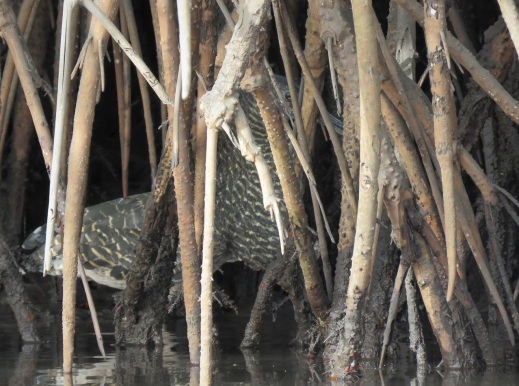
Our main target during a brief visit to the Saloum delta national park, just last week, was a rather unique bird that had so far eluded us: the enigmatic Tigriornis leucolopha. Its presence in the area has been known for a few years only, but it quickly became a classic target species for visiting birders – particularly those touring the country with the excellent Abdou “Carlos” Lo who is based at Toubacouta. But it’s one of those birds that requires a bit of planning combined with a decent dose of luck. It’s certainly not enough to just get on a pirogue into the mangrove forest where it lives: thanks to Abdou’s expert advice, we made sure to set off at low tide even if this meant going out in the mid-afternoon heat.
I’d always thought that the White-crested Tiger Heron (Onoré à huppe blanche) was more of a nocturnal or at best a crepuscular species, but that’s obviously not the case: when the tide is low, it will come out to the edge of the mangrove to fish, apparently at pretty much any time of the day. We were extremely lucky to actually witness this first-hand: after an unsuccessful attempt in one of the bolongs near the island of Sipo, our piroguier Abdoulaye eventually spotted a Tiger Heron, very much out in the open as we drifted past at fairly close range. It quickly entered the dense mangrove forest only to re-appear in a more concealed area a few meters away, carefully navigating the labyrinth of roots and tangles.
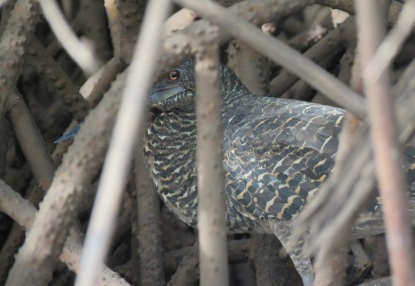
White-crested Tiger Heron / Onoré à huppe blanche, Sipo, 25.12.19 . Check out its amazing yellow-and-burgundy eye
As we were watching and photographing this dream bird, it caught a small fish, gobbled it down and quickly vanished back into the forest.
Note the rather cold colours and overall rather pale plumage of this individual, something that’s also visible in other pictures from the Saloum: possibly an adaptation to the mangrove environment here? Compare with the darker and more rufous birds found in e.g. Ghana and Gabon, for instance in the photo gallery of the Internet Bird Collection.
All in all, quite a surreal moment and a perfect Christmas present – Frédéric and I were of course hopeful we’d get a glimpse of this secretive heron, but certainly never thought we’d get such amazing views. It easily ranks in my Top 10 of Best African Birds Seen So Far, alongside the likes of Quail-Plover, Egyptian Plover, Crab Plover, Pel’s Fishing-Owl, Pennant-winged Nightjar, Böhm’s Spinetail, Little Brown Bustard, Wattled Crane and of course the most bizarre Grey-necked Picathartes (and Shoebill and Locustfinch and Spotted Creeper and… so on). Just like some of these species, the White-crested Tiger Heron – or White-crested Bittern as it is sometimes called – is the unique representative of its genus.
Here’s one more picture of this amazing bird, taken by Frédéric as we first spotted it – pretty cool, right?
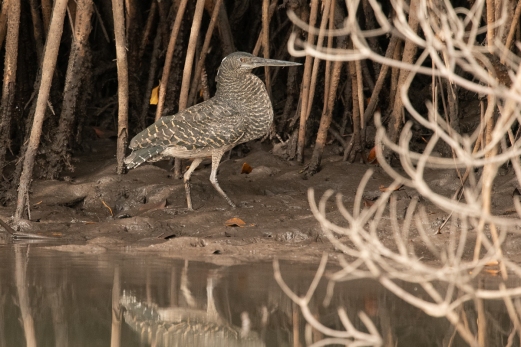
White-crested Tiger Heron / Onoré à huppe blanche (Frédéric Bacuez/Ornithondar)
Earlier that same day – much earlier actually, about 6.45 am to be precise! – we had already heard the rather ghost-like song that’s typical of the species, right from the small jetty at our campement villageois at Dassilame Serere. The song is not dissimilar to the Eurasian Bittern, a monotonous booming “whooooooom” uttered at a very low frequency, at 4-6 second intervals, which however got easily drowned in the dawn chorus of roosters, donkeys, dogs and goats of Dassilame… and which stopped abruptly just as daylight started to take over the night. The next morning I was better prepared and actually managed a few mediocre recordings when two distant birds were singing to each other deep in the mangrove, again pre-dawn and stopping before it properly got light. These turned out to be the first to be uploaded onto xeno-canto: check out the species page here (and make sure to turn up the volume to the max as the sound is quite subdued).
Tiger Bird habitat:
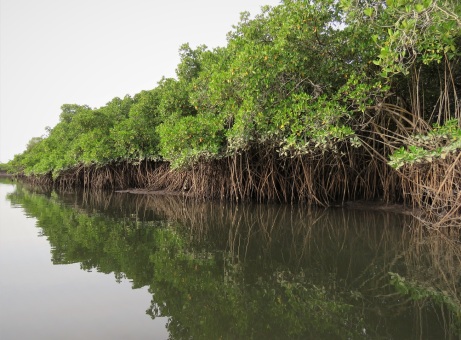
White-crested Tiger Heron / Onoré à huppe blanche (yes it’s in the picture… just impossible to see, even when you know where it is! When we first saw it, it was out on the tiny patch of mud to the right)
The Tiger Heron was initially thought to be restricted, in Senegal that is, to the Basse-Casamance region, where the first record is that of two nestlings collected and raised near the village of Mlomp (Oussouye) in 1979, followed by a few sightings in 1980-81 in the Parc National de Basse-Casamance and a nest found in Nov. 1980 north of Oussouye (A. Salla in Morel & Morel 1990); as far as we know, the next confirmed record was obtained in… 2017, at Egueye island, also near Oussouye, on January 1st, so almost 36 years later.
The first mention of the species in the Saloum delta is from 1980 by A. R. Dupuy (1981), while the next published record is from 2004 only – see comment by John Rose on this blog post [updated 4 Jan 2020] and the short paper by Rose et al. (2016). The next observation that I could find is from January 2007, of a bird photographed near Missirah by Stéphane Bocca. The fact that we heard two birds singing from Dassilame Serere, the records near Toubacouta and Sipo as well as the observation from Missirah all suggest that the Tigriornis is fairly well established here, and may well be widespread throughout the vast mangroves of the Saloum delta: targeted searches are likely to turn up more birds in other parts of the delta. The species is also present in mangroves along the Gambia river, where first discovered in 1996 (Kirtland & Rogers 1997). Casamance and especially the Saloum delta are actually right on the edge of the distribution range of the species, which extends from central Africa through the Congo-Guinean forest zone. In Senegal and Gambia, it primarily inhabits the vast mangrove forests, though it may also still occur in the swamp forest of the Basse-Casamance NP, i.e. in similar habitat to that occupied further south such as in Côte d’Ivoire and Ghana.
Other good birds seen during our boat trip included several majestic Goliath Herons, Palm-nut Vultures, a colour-ringed German Osprey (more on this later), a few Blue-breasted Kingfishers and Common Wattle-eyes (both heard only), as well as an unexpected Swamp Mongoose seen in full daylight (Héron goliath, Palmiste africain, Balbuzard, Martin-chasseur à poitrine bleue, Pririt à collier, Mangouste des marais).
During our stay in the Toubacouta area, we also visited the Sangako community forest, Sandicoly, and bush/farmland near Nema Ba: plenty of birds everywhere, though no real surprises here, except maybe for a fine pair of Bateleurs, a species that’s right on the edge of its regular range here. Other goodies for us northerners included Swallow-tailed Bee-eater, Grey-headed Bushshrike, White Helmetshrike, Bruce’s Green Pigeon, Four-banded Sandgrouse and many more of course (Guêpier à queue d’aronde, Gladiateur de Blanchot, Bagadais casqué, Colombar waalia, Ganga quadribande). Also a nice series of owls heard from our campsite: Greyish Eagle Owl, African Scops Owl, Pearl-spotted Owlet and Barn Owl! (Grand-duc du Sahel, Petit-duc africain, Chevêchette perlée, Effraie des clochers).
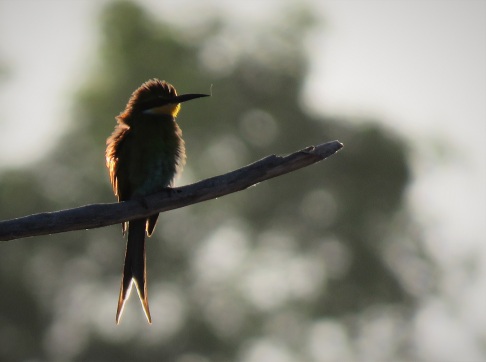
Swallow-tailed Bee-eater / Guêpier à queue d’aronde
With the addition of the Tiger Heron but also Ferruginous Duck (a pair on a small dam near Mbodiene, 24.12; Fuligule nyroca), my Senegal list now stands at 530 species: which one will be next?
4 responses to “The Tigers of Toubacouta”
Trackbacks / Pingbacks
- - January 19, 2020

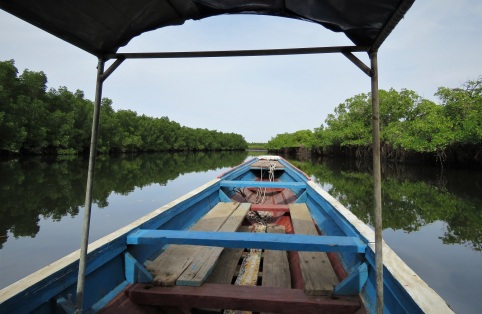
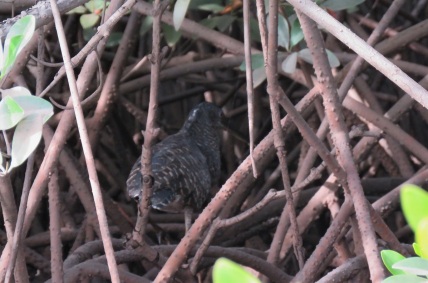
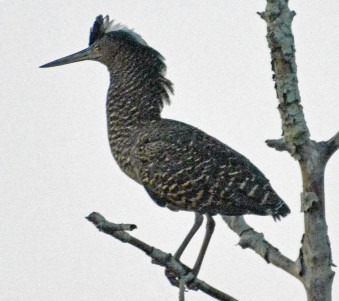
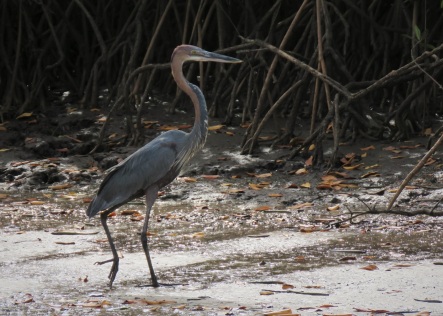
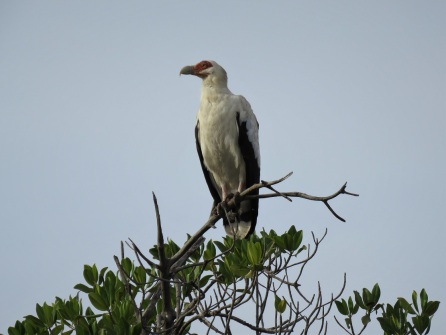


































































































































































































The White-Crested Tiger Heron was first identified in the Saloum delta in 1980 (Dupuy, A.R. (1981) Le Héron tigré Tigriornis leucolophus (Jardine) au Sénégal. Oiseau Rev. fr. Orn. 51: 252–253.)
Thanks a lot John for this reference which I hadn’t come across so far. I’ve updated the blog post accordingly. If you happen to have a PDF of the article I’d be happy to receive a copy!
Nice photos of a very cool bird! Such an interesting habitat, too. It must have been an exciting experience to find it.